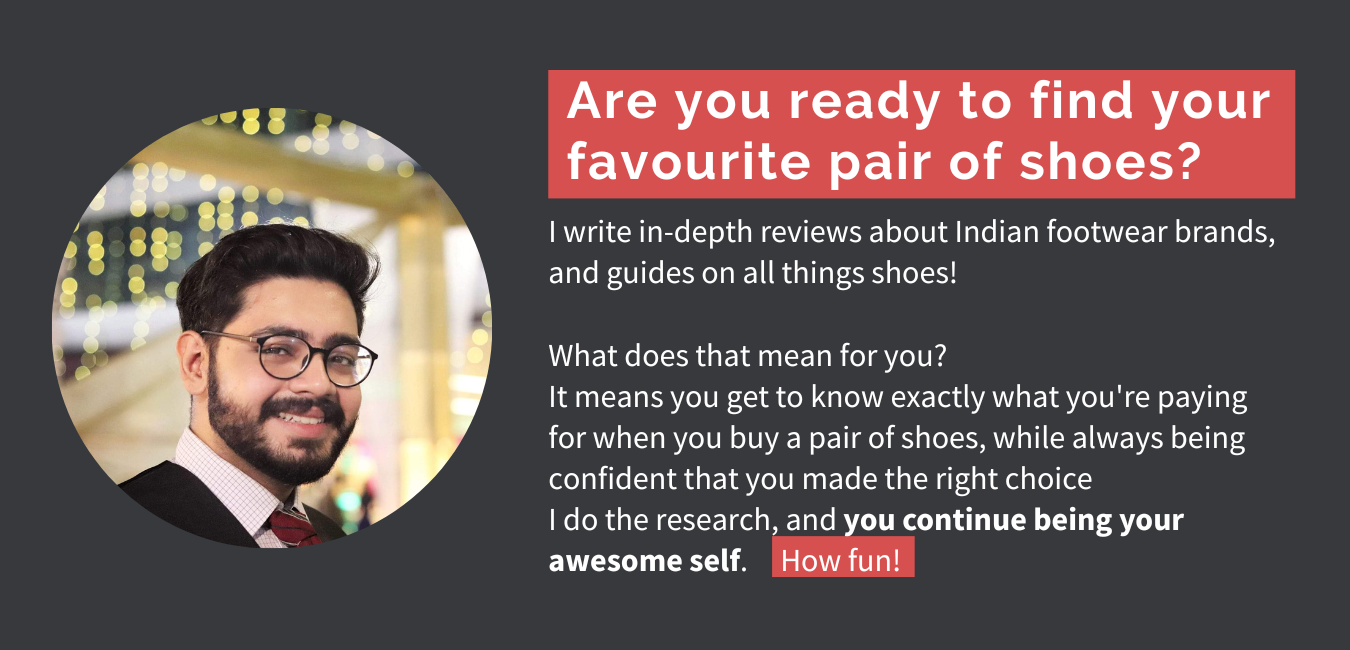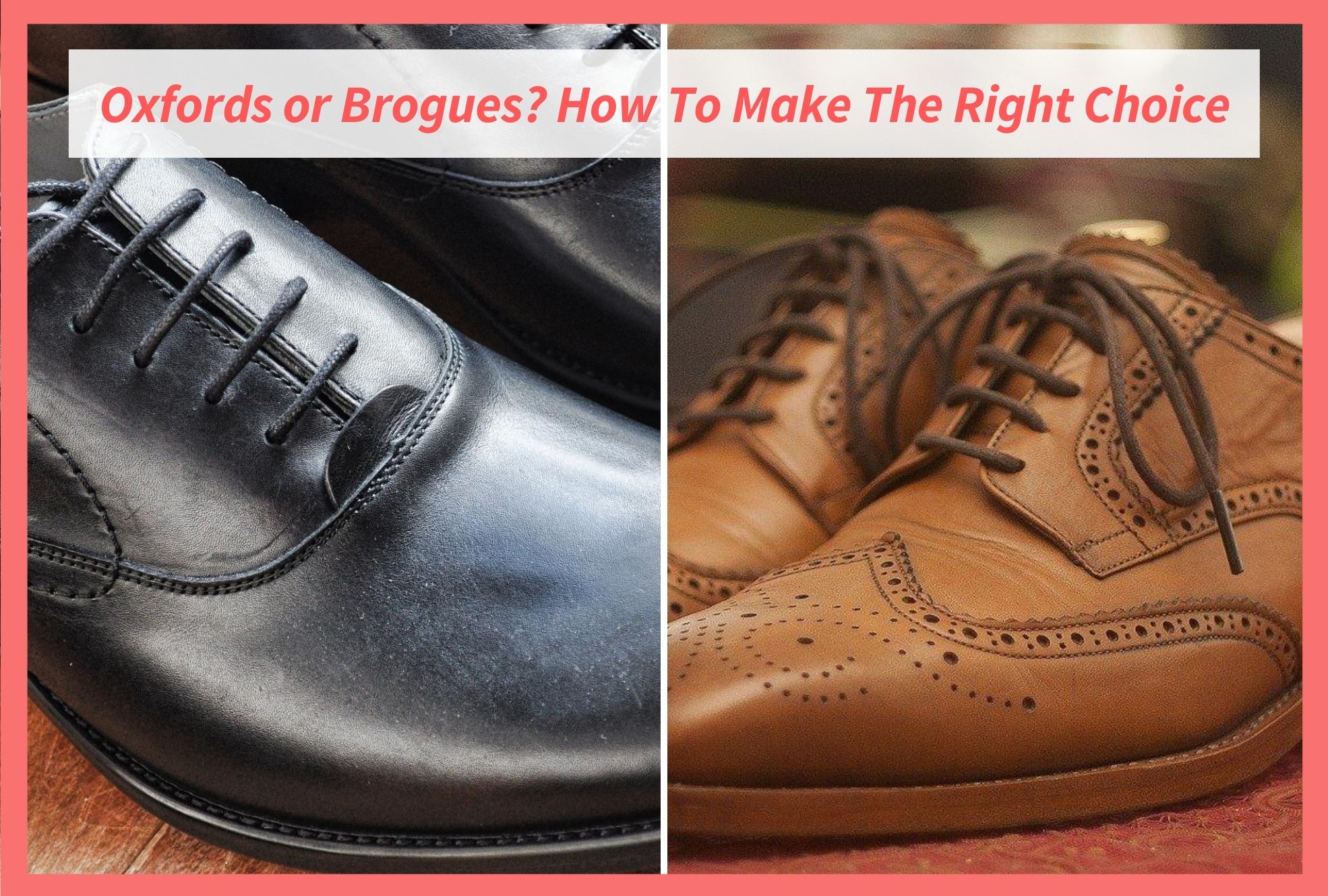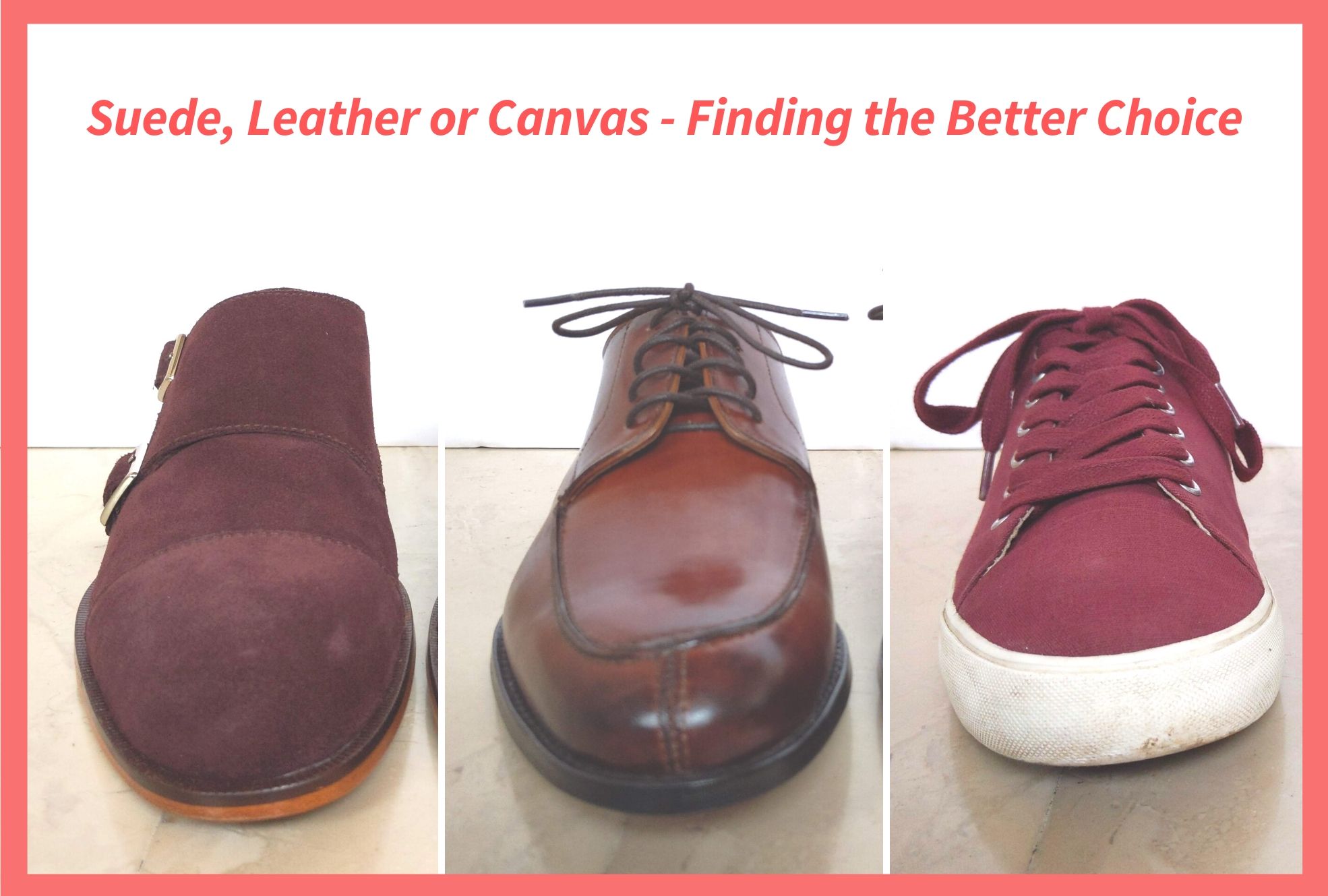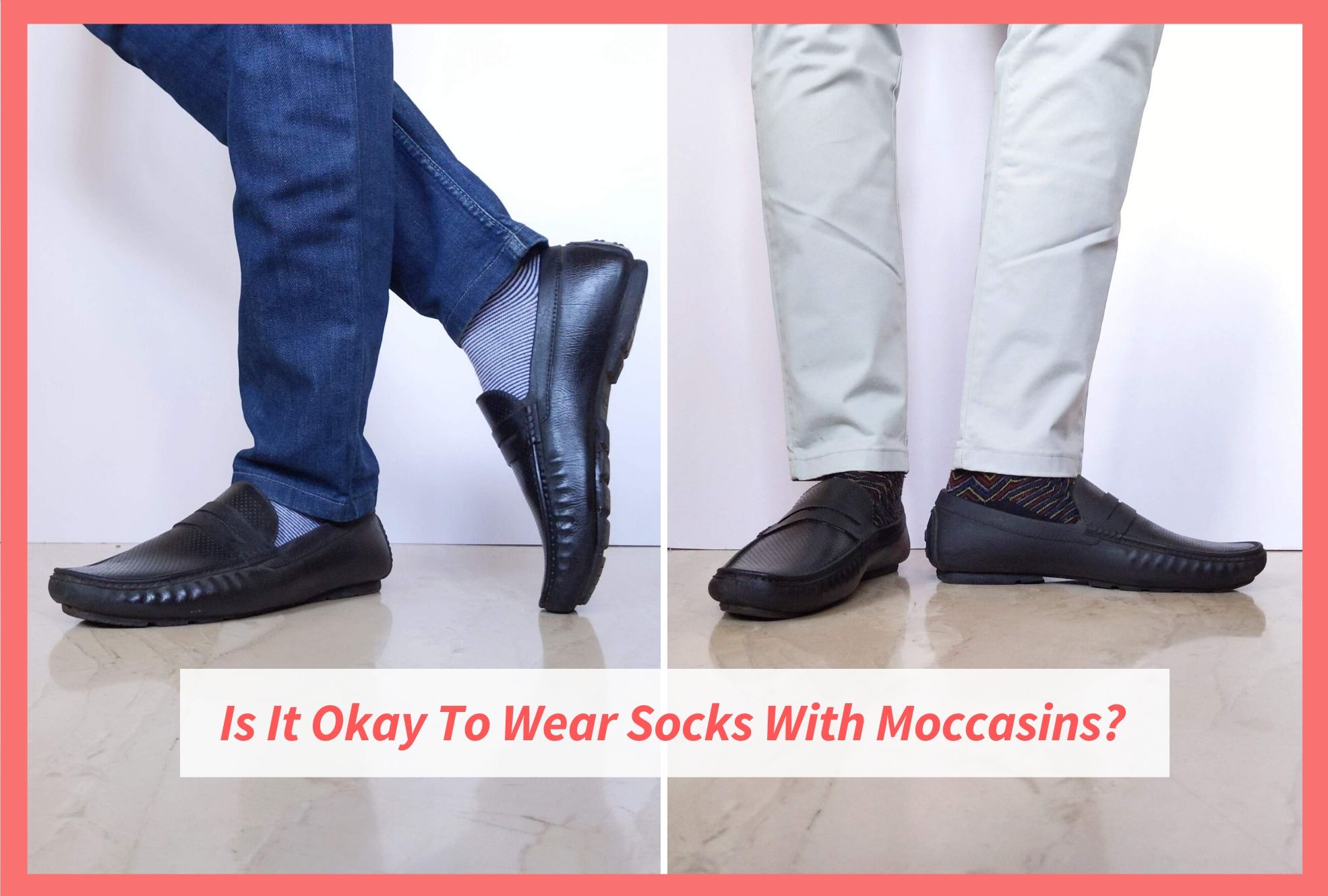“Good shoes take you to good places”
Min Seo Hyun, Boys over Flowers
Humans have been wearing shoes since the early years. They were originally invented for protection but as the years passed, men started using them to show a sense of individuality and character.
Shoemaking is an exquisite craft, one that has been perfected by master shoemakers over decades. And there is nothing else that is a better proof of this art than the modern day formal / dress shoes.
Guys, we’re going in deep today. From the various types of formal shoes right to the shoelaces – this guide will cover it all. So that the next time you’re buying a pair of formal shoes, you know exactly what to look for!
Since this is an extensive read, I’ve put down links for easier navigation –
Table of contents:
- What are dress shoes?
- Parts of a formal shoe
- Types of formal shoes
- Shoe detailing
- Shoe Construction
- The Leathers
- Various types of soles for dress shoes
- Colours
- Lacing
- The Heel
- Too Long, Didn’t Read? (TL,DR;)
Hang on tight; this will be a fun ride ^_^
So,
What are dress shoes?
Simply put, they are the same as formal shoes.
‘To dress up’ is to dress in smart and formal clothes, and that’s how the shoes associated with formal wear are called dress shoes. Both terms are used interchangeably from time to time.
I personally prefer referring to them as dress shoes – it adds a certain richness to the term, if you ask me 😀
Parts of a formal shoe:
Before moving on the various styles of formal shoes, you should be familiar with the various parts that make up a dress shoe. It will make the understanding of the subsequent sections easier.

Here’s a simple labelled diagram, with reference to the most common style of formal shoes that you would’ve seen –
Types of formal shoes:
The various types of formal / dress shoes for men can mainly be categorized based on the way the different parts of the shoe are sewn together and the type of the fastening used (i.e. laces, buckles, or slip-ons)
1) Oxford shoes:
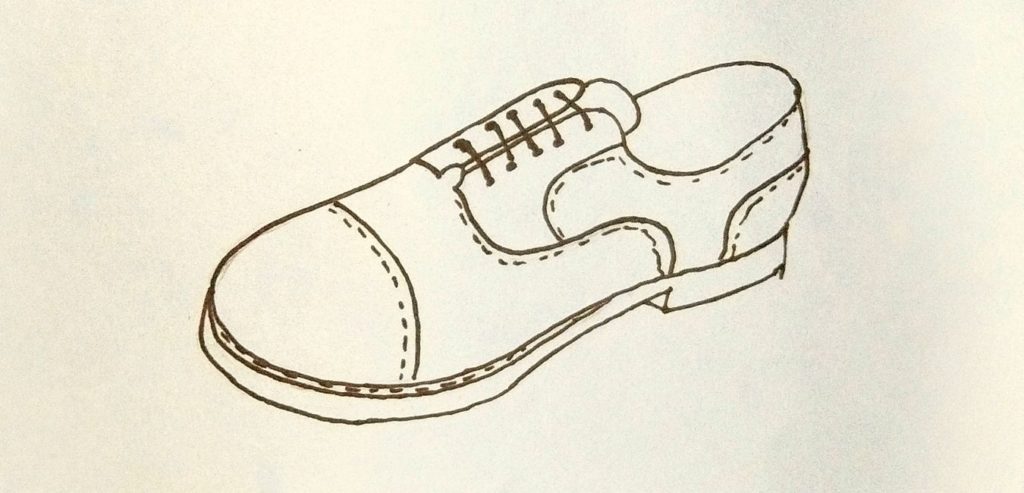
The most elegant of styles, the oxford shoe is the first of the shoe styles every man must own. You can identify this shoe by its closed lacing system – the quarters are sewn under the vamp and over the tongue, which is sewn onto the vamp.
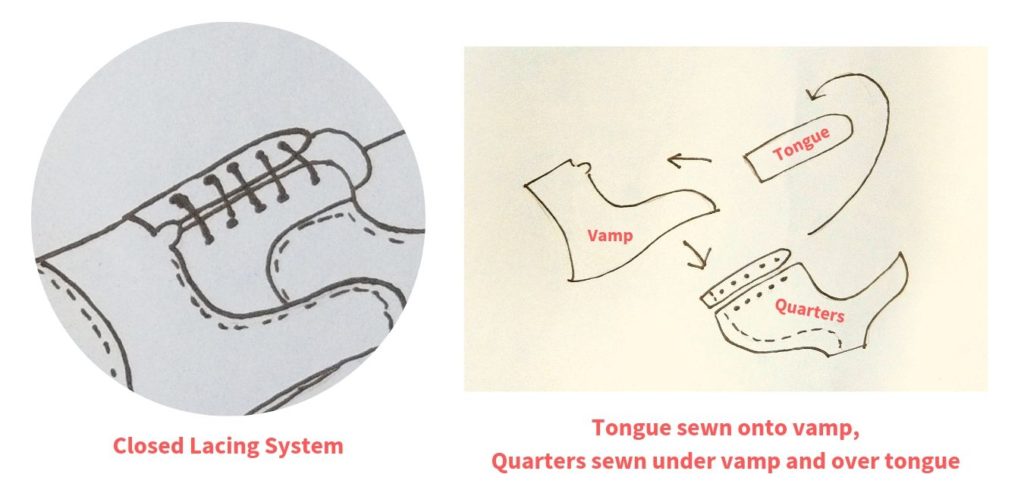
Although best worn with a classic suit, the oxford shoe looks equally tasteful with a pair of formal / dress trousers, and can also be, in the right occasion dressed down in a pair of jeans to keep up the sharpness of its look
2) Derby shoes:
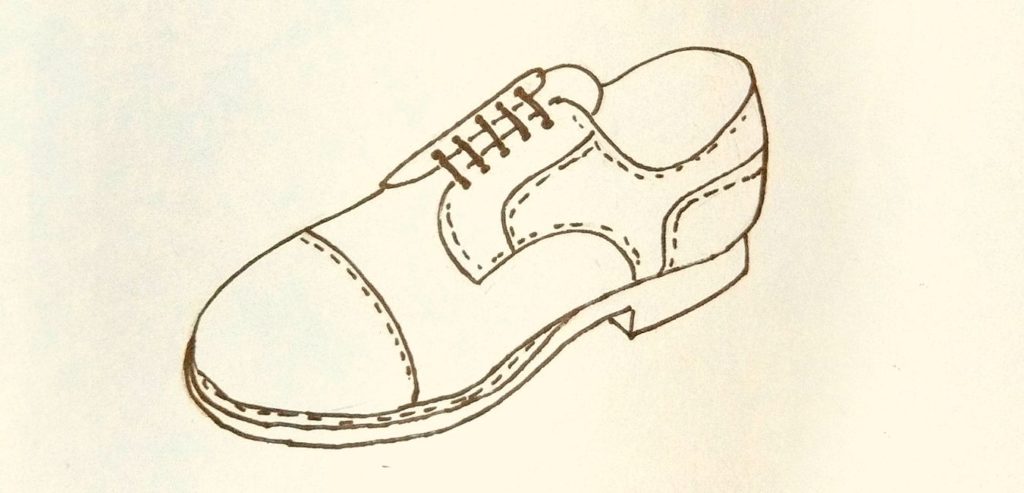
What Oxfords bring to the table with respect to elegance, Derbies match them with popularity. Faster to slip into, derby shoes have an open lacing system – the quarters lie over the vamp, which is the same piece of leather as the tongue. Derbies are also referred to as Bluchers in some parts of the world.
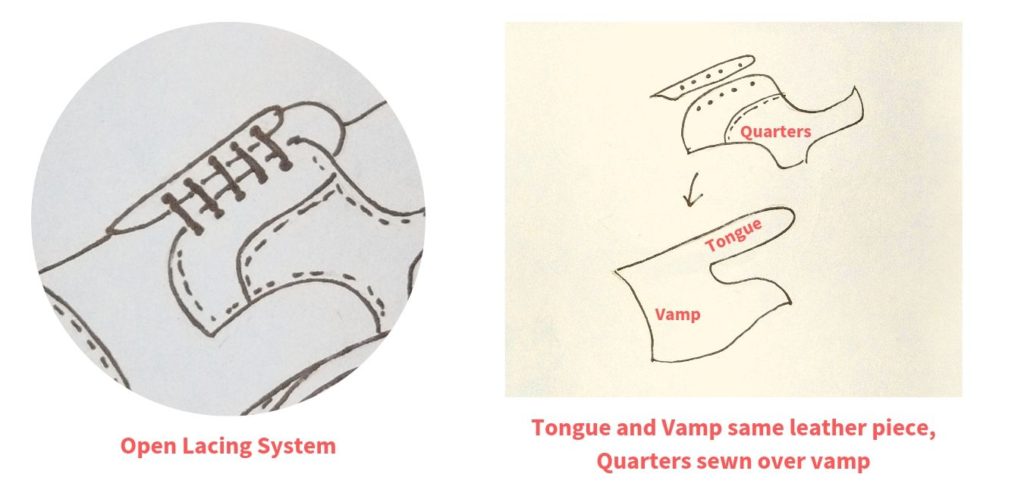
In terms of formality, the Derby shoes are a notch lower than the Oxfords, but they can still hold their own with any matching suit or dress pants. And with so many possible design variations, I might even dare to say that these shoes look better dressed down in jeans / chinos than the oxford shoes.
3) Monk Strap shoes:
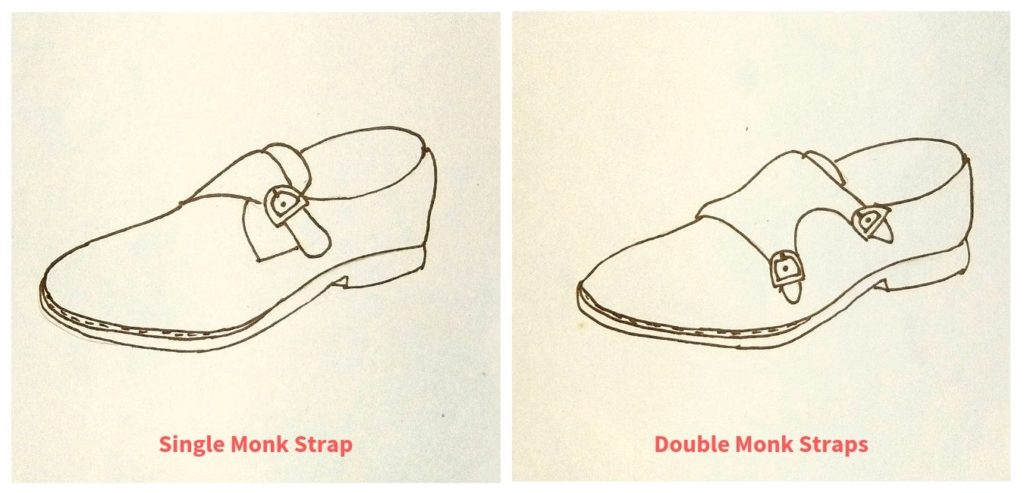
Another one of my favorites, the Monk Strap shoes use buckles for fastening. One of the quarters has the buckles and the other one ends in leather strap(s), which can be fastened just like you would tie a watch.
The buckles themselves come in various shapes and colours. Based on the number of straps (one or two), monk shoes can either be called as Single Monk Strap or Double Monk Strap shoes. Double Monk Strap shoes are especially popular among monk shoe lovers.
Because of this unique fastening system the Monk Strap shoes are quicker to put on than Derbies, and they look just as great!
A single / double monk strap shoe in black can easily be worn with a matching suit and look sharp. In other colours, these shoes go well with daily formals and casual wear.
4) Loafers:
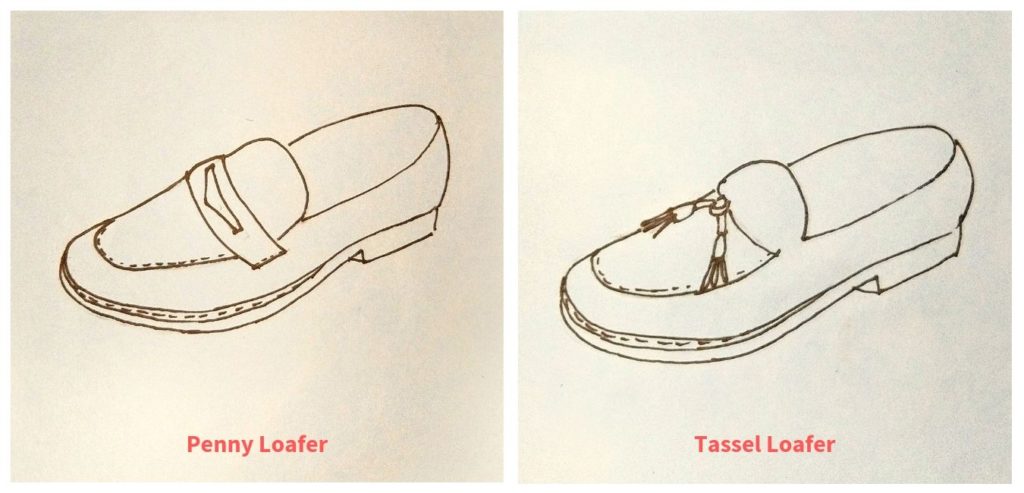
Loafers, or slippers as they are sometimes called, as slip-on shoes.
Inherently casual, these shoes are the easiest to slip into, having no lacing or buckle fastening in place. The vamp, quarter and tongue are all the same piece of leather
Based on the presence of specific decorative details, these shoes can be further divided into Tassel or Penny Loafers
These are the best shoes to rock to sock-less look
5) Boots:
Fiercer weather demands greater protection, something that ankle length formal shoes cannot provide. That is where the mighty boots enter – with a height of usually 2 to 4 inches above the ankle.
Boots cover not only your feet but also the lower leg, thus protecting against the elements of rain/snow.
The same variations of shoes can be applied to boots as well – Oxford Boots, Derby Boots, and even Monk-Strap Boots. Apart from these, there are two additional styles that are well known in the world of boots – The Chukka boot and the Chelsea boot
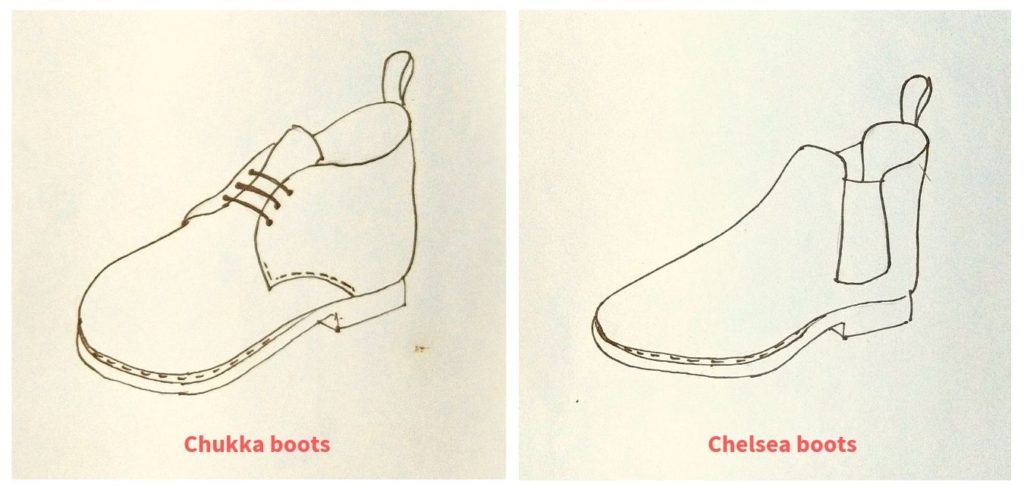
Shoe Detailing:
1) Toe/Vamp detailing:
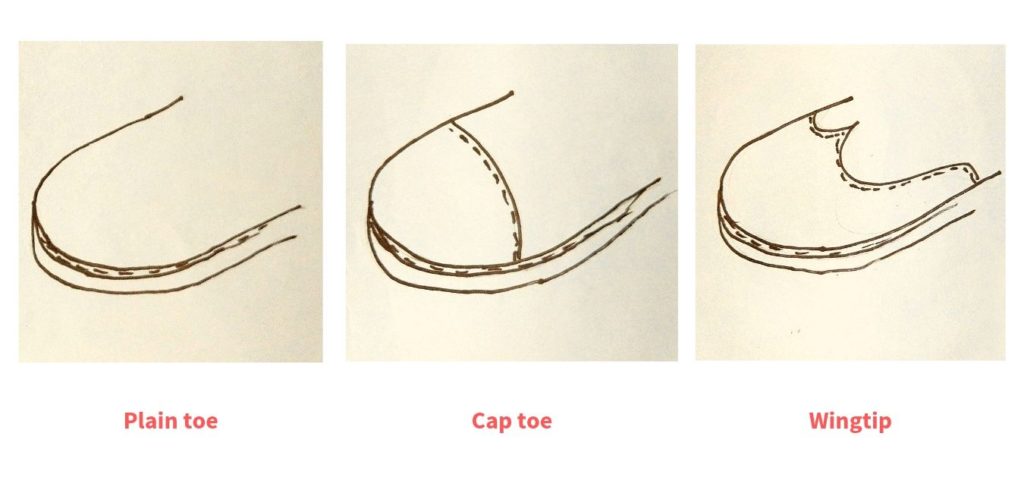
- Plain toe: There is no decoration on the vamp/toe of the shoe. Often considered to be the most formal version of dress shoes
- Cap toe: This is denoted by the presence of an additional piece of leather stitched over the vamp on the toe, forming a cap shape on it.
- Wingtip: Wingtip shoes have toe cap in the shape of a ‘W’ (or an ‘M’, depending on how you look at it)
This seam is usually decorated with brogueing and this detailing is synonymous to full brogues.
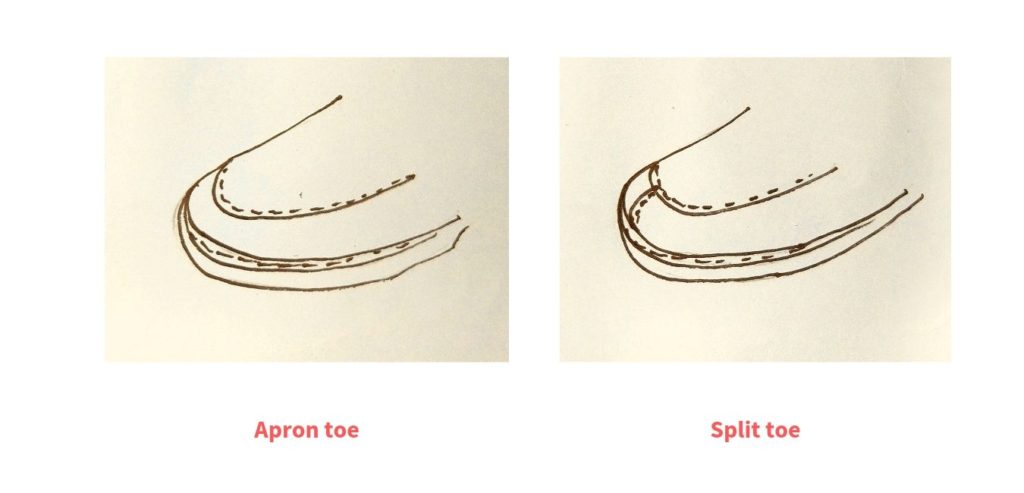
- Apron toe: Unlike the Cap toe where the leather piece is stitched like a cap, Apron toes have a leather piece laid over the vamp and stitched at the seams like an apron. This is most commonly seen in loafers.
- Split-toe: In addition to the Apron toe, Split toe shoes will have an additional vertical seam that runs down the center of the apron
2) Toe shape:
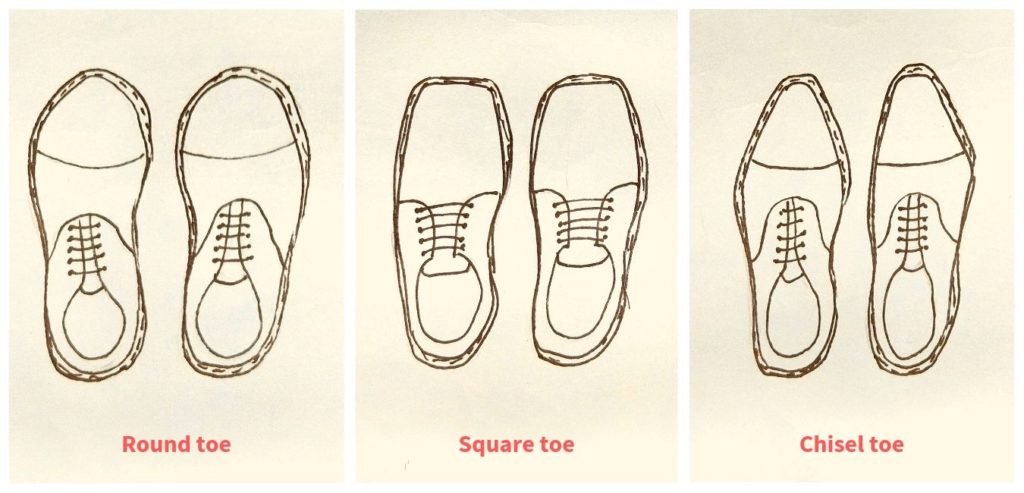
- Round toe: The shape of the toe is round which gives enough room for wide feet
- Square toe: Square-toed shoes do exist, yes. Do I recommend them? Not at all. This toe shape does not flatter most people and should be chosen only in the direst of circumstances
- Chisel toe: Neither round nor totally square but more like a chisel, shoes with such toe shape can look very elegant.
3) Brogueing:
Brogueing consists of tiny patterns of punched perforations across the seams and vamps of the shoe. Irish farmers originally started punching these holes to dry their waterlogged shoes faster after working in the bogs. Now they are purely a decorative detail and be classified into four kinds based on the extent of the brogueing
- Full brogues: Brogueing is present on the seams where different pieces of leather join i.e vamp, quarters, toe. An attractive pattern of brogueing called medallion is done in the center of the toe as well. Full Brogues have toe caps in the winged shape of ‘W’ or ‘M’ i.e Wingtips
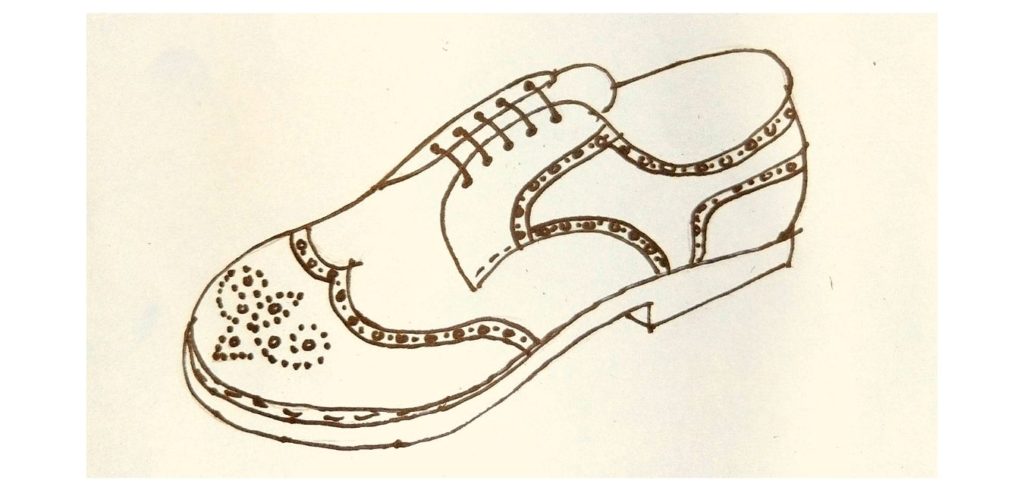
- Semi-brogues /Half-brogues: It is the same as full brogues with one difference – the toe cap is like straight a regular cap toe
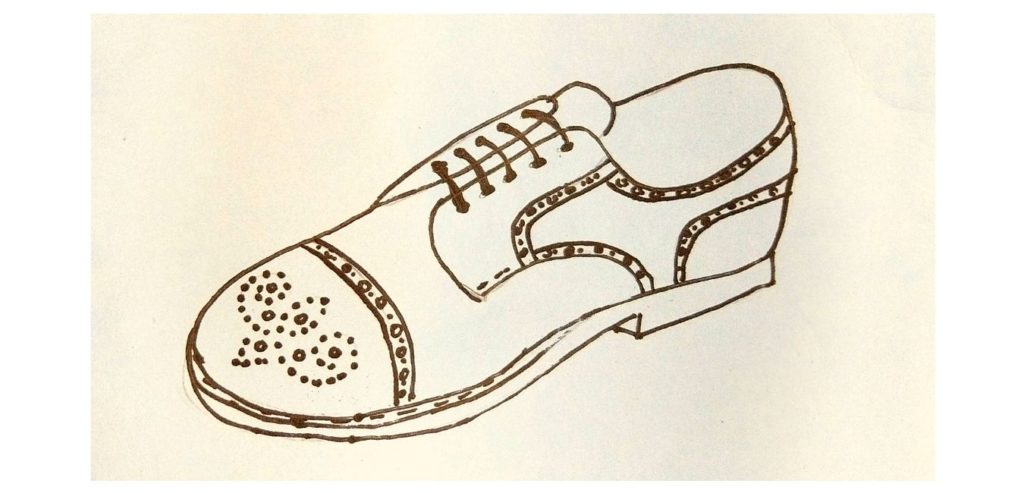
- Quarter-brogues: Brogueing is done only on the seam of the straight toe cap. Quarter brogue shoes have no pattern on the center of the toe

- Longwing brogues: Unlike a Wingtip where the winged toe ends at the sides of the toes, longwing brogues have the wings extending along the sides all the way the back where they end at the center seam
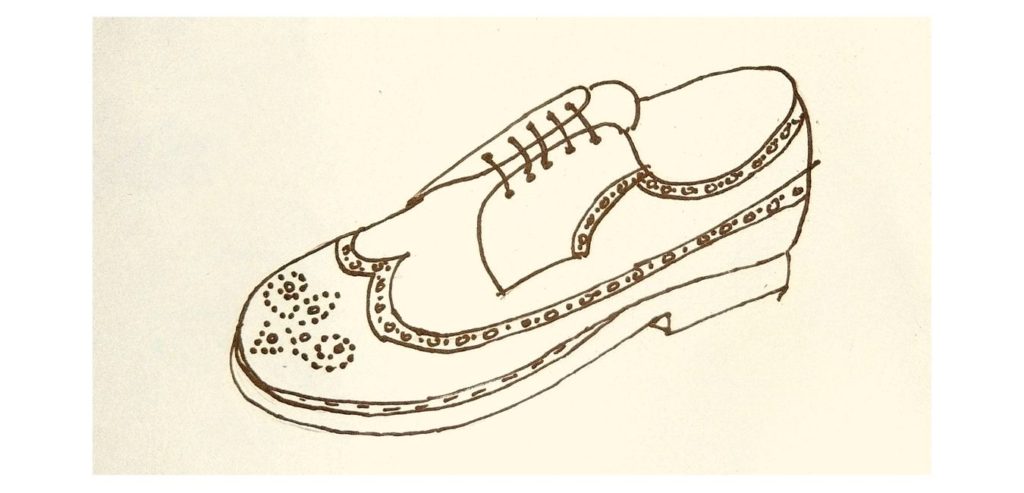
4) Other decorations:
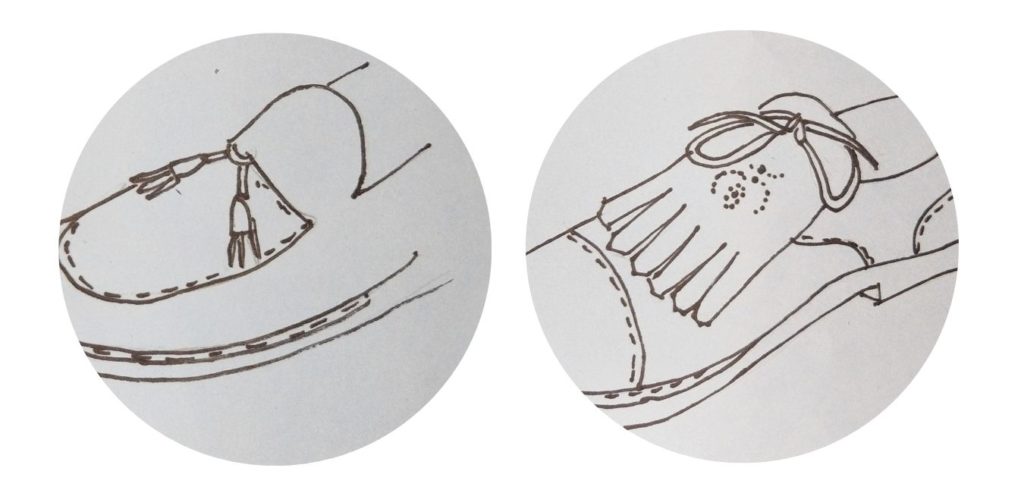
- Tassels – These are loosely hanging strips of leather attached to the vamp and knotted at one end, usually used in a pair to decorate loafers
- Kilties – These are large tongue like leather pieces decorated with tassels and brogueing which are laid over the vamp after lacing the shoes. Golfers typically used it in their golf shoes in order to protect the lacing from any damp on the golf course
Shoe Construction:
The durability, flexibility, and repairability of a pair of formal shoes will depend on the method that is used for its construction.
Three techniques are used – Cementing, Blake-Stitching, Goodyear Welting.
The technical differences between the three lie in the manner of attaching the outsole, upper and insole together
1) Cementing:
Cemented shoes are just what the name suggests – the outsoles are cemented / glued to the upper without any stitching involved. This method is the quickest and the cheapest of the three, which is why you’ll find most of the mass-produced formal shoes in the market to have cemented soles
This method can be ideal for casual shoes and those with pvc / rubber soles, but traditionally well-made dress shoes demand more sophisticated construction methods. The absence of stitching makes such shoes the least durable, providing no repair value whatsoever once the soles start coming off
2) Blake-Stitching:
Blake-Stitching involves a single stitch that runs on the inside of the shoe attaching the insole, upper and outsole together. It is a relatively modern method of construction that allows the shoe to be more durable than its cemented cousins.
Blake-Stitched shoes are also light and flexible. Resoling these shoes can still be difficult though, unless a very specific Blake machine is available. This can make the repair of such shoes a costly affair.
3) Goodyear Welting:
The most durable shoe construction of the three, Goodyear Welting involves the use of a welt. A welt is a strip of leather that runs along the circumference of the outsole and is used to hold the upper, insole and outsole together.
Goodyear Welted shoes have two running stitches- one joins the welt to the insole and the upper and the second joins the welt to the outsole.
The welt and the double stitching make Goodyear Welted shoes expensive, heavy and long to break-in. But power through the initial discomfort and they’ll prove to be a worthy investment to you, especially due to the ease with which they allow re-soling
The Leathers:
The quality of the raw materials used often decide the elegance and quality of the produced shoe.
Leather obtained from animals is still the most appropriate material for making shoes because of the advantages that it provides. However, other materials are sometimes used as well.
Have a look in the catalog of a handful of shoe brands and you’ll see that everyone lists the type of leather they use in a different manner, not necessarily under the same classification. It can get pretty confusing, which is why the below list of leather types has been divided based on three aspects that should cover it all: the source of leather, the grain (the outer layer of the animal hide) and the finish.
Based on the source –
1) Calfskin
Calfskin leather is obtained from calf and used in the most high quality footwear. It is soft with a very fine grain and shoes made with these are just beautiful to look at! This kind of leather is expensive, but very popular – it can hold a shine really well and last long on the shoes if properly taken care of
2) Cowhide
Cowhide is obtained from cows and is one of the most used animal animal hides for making leather. It is thicker and firmer than calfskin but still flexible. Shoes made out of cowhide leather can be very sturdy since the fibers of the skin are very dense and strong
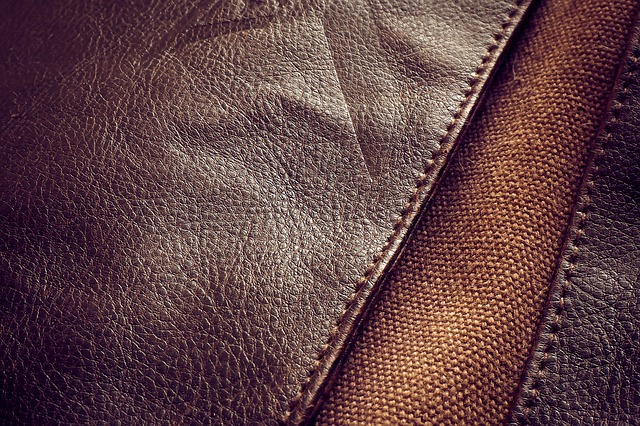
3) Cordovan
Cordovan is rare and highly sought-after material for making shoes, made from the hides of horses. Only a limited portion of the hide can be used to make cordovan (one horse = one shoe), and its production and treatment takes an extensive amount of time. This combined with the sturdiness it provides and the pure elegance it exudes, makes Cordovan one of the most expensive materials for formal shoe uppers.
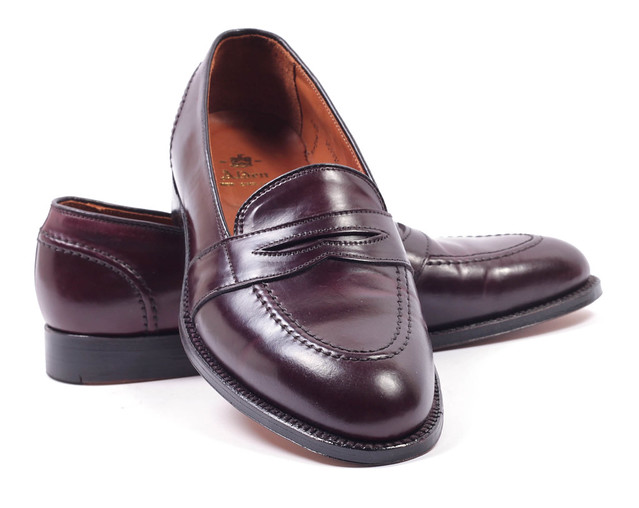
Photo by Menswear Market
4) Exotic Animals
Apart from cattle and horses, animal leather is also sourced from some other animals – Goats, Boars, Crocodile, Lizard, Ostrich. Each of them will have different distinct patterns (especially when it comes to Crocodile and Lizard leather, because of their scales) which make them very attractive to look at
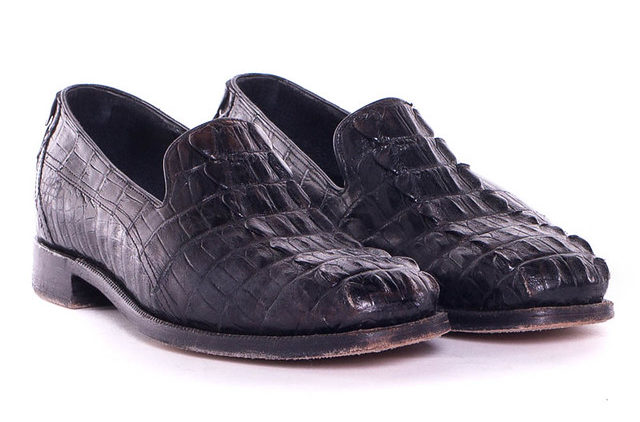
Photo by Menswear Market
5) Pleather / PU / Faux Leather
This is artificial leather that has been made with the fibrous part of the animal hide left after making actual leather and coated with PolyUrethane. It might look the same as actual leather but is actually distinctly different. It is relatively cheap to produce and can be durable, but will not age or breathe as well as real leather.
I do own a couple of shoes in faux leather, with their low maintenance they are useful from time to time. However, these are my least favorite pairs in terms of feel and comfort so I’d suggest you think about these pretty sparingly
Based on the grain –
1) Full-grain
Full grain is the highest and purest grade of leather. It is all the layers of the animal hide without any corrections done to it to remove the surface imperfections. With all the grain intact, full-grain leather shoes will be strong, durable and highly breathable. They will also age really well, allowing the shoe to have a very distinct appearance over a period of time
2) Top-grain
If any surface corrections are made to the leather by means of sanding/buffing, then it can be called as Top-grain leather. It is the second highest grade of leather.
Although thinner than full-grain, top-grain leather still serves well for high-quality leather shoes
3) Corrected-grain / split-grain / genuine
The bottom layers of the hide that remain after the top layers have been split off is called as Corrected-Grain leather. Artificial grains might sometimes be applied to such leathers to make it look natural.
Corrected-grain leather is also sometimes termed as Split-grain or Genuine leather. The term ‘Genuine’ is really confusing since it can also sometimes mean real leather instead of fake leather (which has nothing to do with its grade), so be careful to clarify when you read it being used for a product
4) Bonded
Bonded leather is the lowest quality of leather, made by bonding the remaining scraps of the hide with polyurethane or latex. This kind of leather is the cheapest to produce and falls apart quickly.
Based on the finish –
1) Smooth leather
The term smooth can be used to describe leather from the hides of any of the animal hides. During production, the grain side is pressed against a sheet of glass which gives it a smooth finish. The actual texture will depend on the animal from which it is taken from.
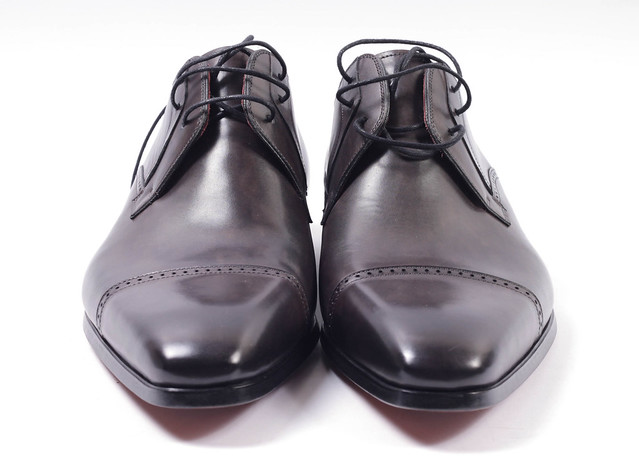
Photo by Menswear Market
2) Suede
Suede has a velvet-like feel and is made by using the flesh side (the underside of the skin) of split-grain leather and sanding it to give that characteristic nap and texture. Since this does not include the outer thicker skin layer, suede is softer than smooth leather
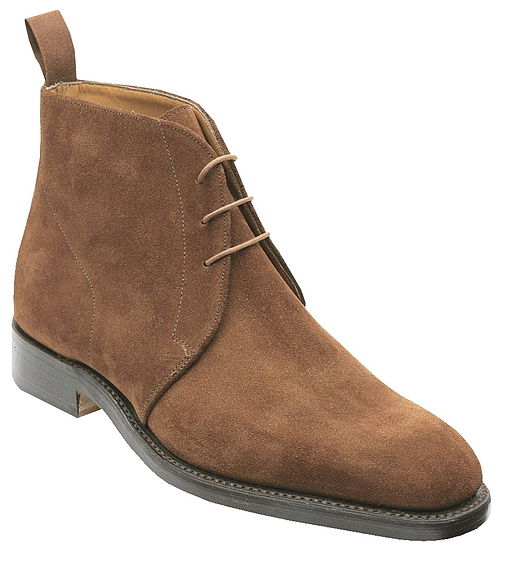
Photo from Wikimedia commons by Rainer Ersfeld
3) Nubuck
Nubuck is very similar to Suede, the difference is that instead of the underside the grain side is sanded and buffed to give the velvety texture. Since the grain side is used, nubuck leather is much stronger and more durable than Suede. However this also means that Nubuck might show some natural imperfections on the outside.
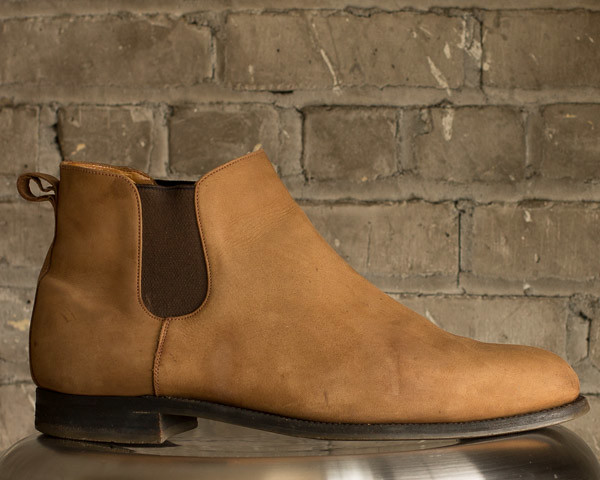
Photo from Flickr by Robert Sheie
4) Patent leather
Meant to be paired with a tuxedo, patent leather is highly glossy and shined leather. The permanent shine is done by coating it with lacquer or synthetic materials. Patent leather shoes will crease fast and should be reserved only for appropriate occasions.
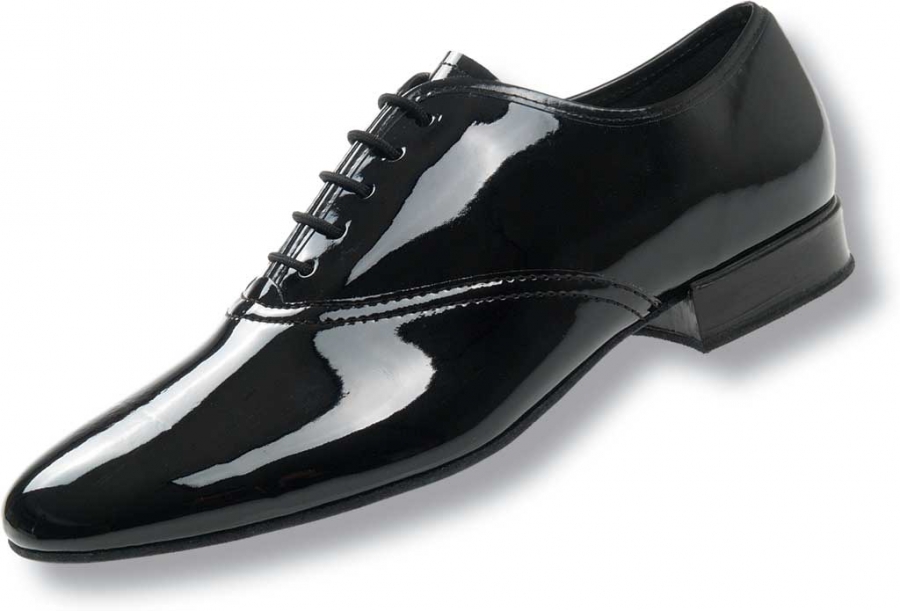
Various types of soles for Dress shoes:
1) Leather
Leather is the most formal choice of material for making dress shoes. These will last you a long time, and combined with a material like cork will also be pretty comfortable as the leather molds to your foot over time.
One downside of using leather for soles is that it is not weatherproof – Constant use of thin leather sole shoes in snow/rain will shorten their life
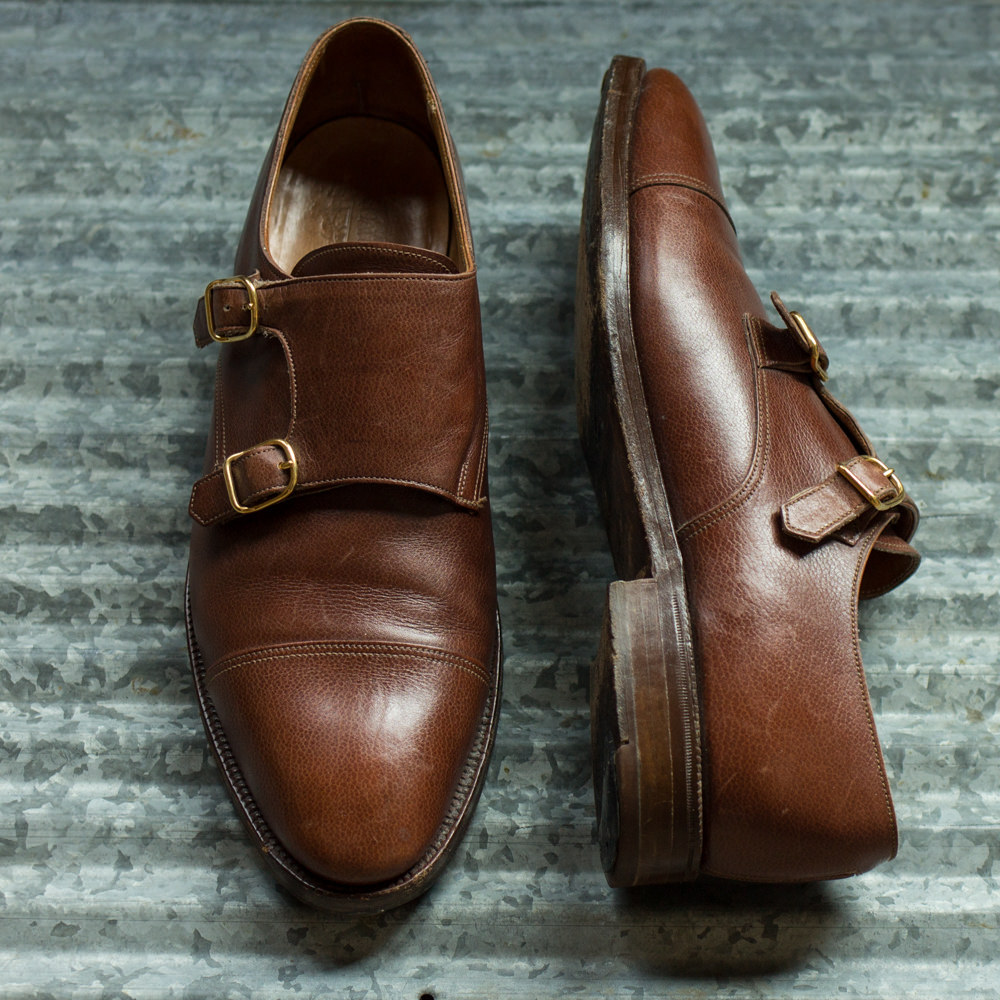
2) Rubber
As compared to leather, rubber soles are lower on the formality scale. They are also naturally water resistant, so your soles won’t ruin even if you use them in the snow or rain. Rubber soles are flexible and require no break-in, but for a long day’s use won’t match the comfort of a leather sole.
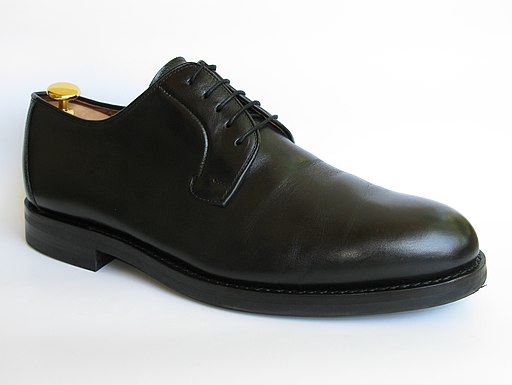
3) Dainite
Dainite is a brand of rubber footwear soles that were invented as an alternative for leather soles in wet and snowy conditions. Seen from the sides, there will be little to no difference in appearance between Dainite and Leather soles. Such soles have little studs on it that are said to provide traction while walking. They are often attached to the dress shoes using Goodyear Welt so that re-soling can be easy.
Although great outdoors, dainite soled shoes can sometimes cause slippage on smooth surfaces indoors

Photo by William J Sisti on Flickr
4) Crepe
Crepe soles were made famous by Clarks Desert Boots. They have a cream-yellow colour and a typical wrinkly texture. Crepe will add a casual touch to your leather shoes, so they are not ideal for formal wear. They are slightly heavier than rubber soles but provide excellent comfort and support.
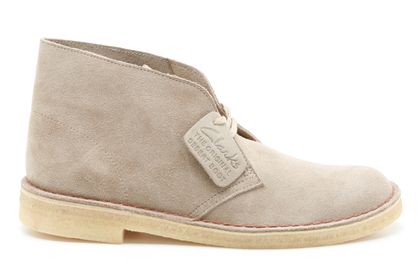
Photo by C & J Clark archive on Wikimedia Commons, CC BY-SA 3.0
5) Commando
These are big chunky rubber soles that are typically used for outdoor boots. Like Dainite, Commando soles provide great traction (often better), but they have a very rugged look
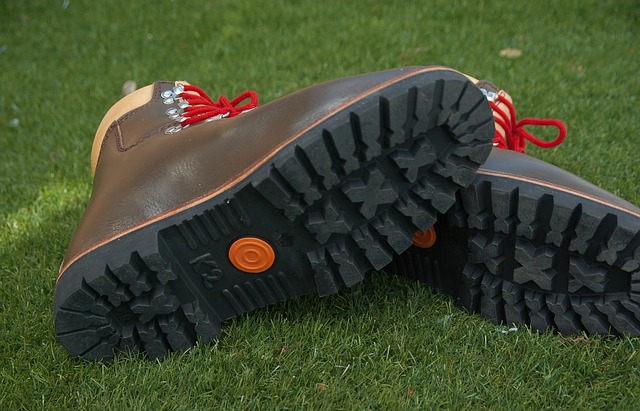
Colours:
Just like the style variations, formal / dress shoes are available in a myriad of colours. You would think that black and brown are the most common ones – but with so many shades of brown itself, it all depends on the shoe-maker’s vision or the customer’s choice.
Blacks, Grays, Medium to Dark Browns, Tans, Shades of Red, Blues, Violets – any colours of the spectrum are possible.
Ultimately you must choose the colour of your shoes based on your needs. It is always good to start with a pair of black and brown, and then branch out based on your specific tastes
Lacing:
The basic principles behind the things that make up a particular shoe style/construction have not changed much over the years – and the same applies to lacing your shoe/boot. Be it an oxford or a derby, there is a certain way it is supposed to be done, that allows the particular style to look its cleanest and best.
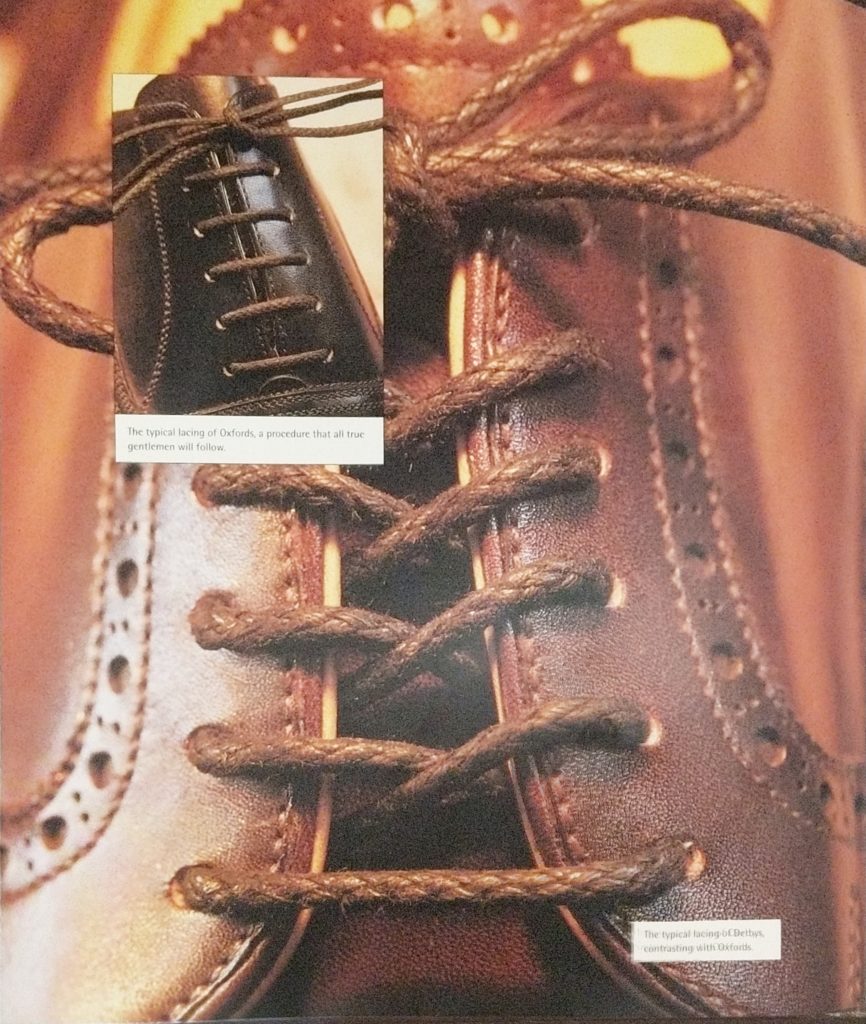
Derby shoes are supposed to be laced criss-cross
Usually shoe laces are made of cotton / hemp, and the length depends on the number of eyelets on the shoe. The colour of the lace must match the colour of the leather (or be darker than it). However in recent times men have often played with different coloured shoe laces to create a contrast, something that will be entirely decided by your individual taste and comfort. The rules are present as a framework of sorts – you can never go wrong if you stick to them, and will always end up looking on-point.
The Heel:
The shoe heel was first used in Persia in second century A.D to give horsemen of that time a firmer grip on the stirrups. Eventually, it found its way into fashion and while there have been many trends since with respect to their height and decorations – the shoe heel in its basic form still remains an important part of the shoe.
With respect to the shape, three kinds are most commonly found –
- Slightly asymmetrical – said to be the most comfortable
- Trapezoidal with a wider base, typically for wide shoes
- Trapezoidal with a narrow base, typically for narrow shoes
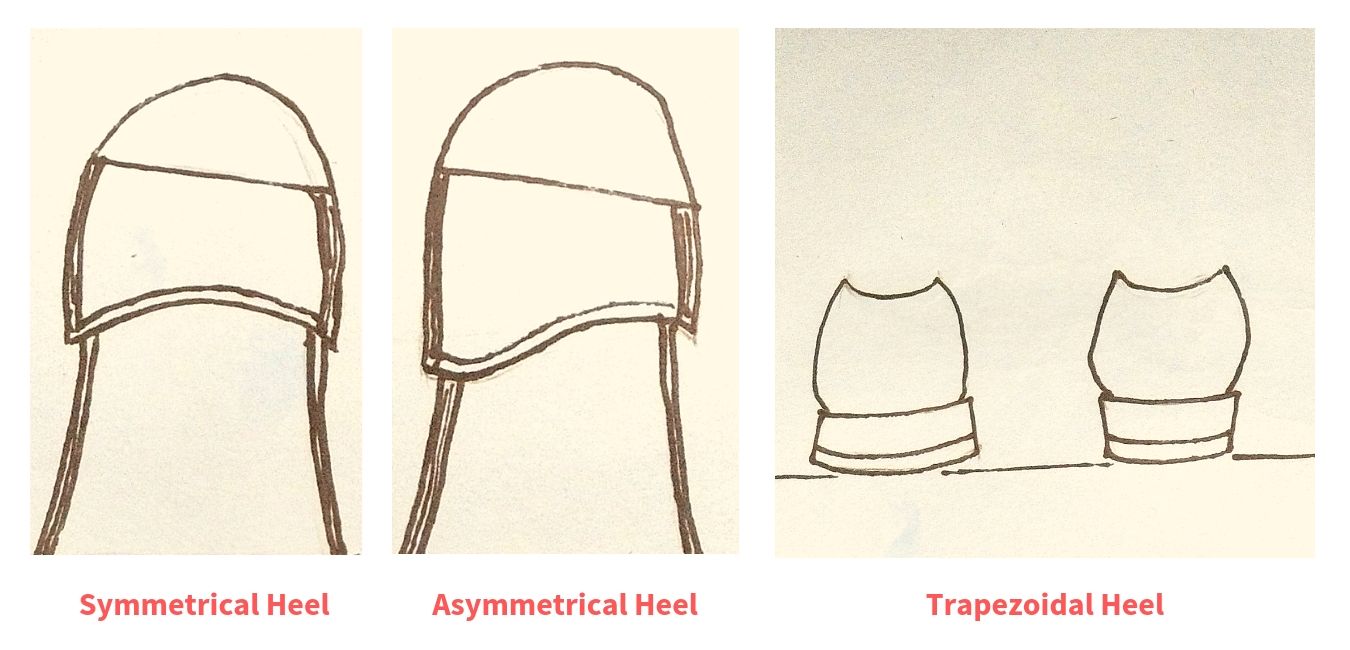
The heel of the formal shoe is not a single piece, rather it is constructed by attaching several layers of leather on the outsole, finally hammered in place to make the material sturdier to deal with the regular wear and tear.
The multiple layers of leather is also why the heels of a shoe are often referred to as having a stacked heel
Since the heels of both the left and right shoe must be exactly equal, they are made in pairs, filed and shaped to remove any mismatch. It is definitely an important part of any pair of men’s formal shoes – heels of the appropriate height will not only provide stability to the feet while walking but also increase the overall flexibility and comfort of the shoe.
And better overall comfort means your feet will be thanking you for providing them a worthy companion for the day 😉
There it is! All that you need to know about formal shoes for men.
We covered so many details that it felt necessary to have a short summary 😛
Here’s the TLDR; version –
- The term ‘formal’ and ‘dress’ shoes can be interchangeably used as they mean the same thing i.e footwear worn with smart and formal attire.
- The different styles of formal shoes are identified by the way its separate parts are stitched together i.e. vamp, quarters, tongue.
Main styles include oxfords, derbies, monk straps, loafers and boots. - Additional way to categorize formal shoes for men is the details/decorations done on the shoe. These can be on the vamp/toe region, the shape of the toes, brogueing, and other details like tassels and kilties.
- The durability and flexibility of formal/dress shoes will depend on the method that is used for its construction. Three techniques used are Cementing, Blake-Stitching, Goodyear Welting.
Technical differences lie in the manner of attaching the outsole, upper and insole together. - The quality of the raw materials decides the quality of the produced shoe. The types can be divided on the basis of three categories – source, leather grain, and leather finish
- Based on Source – Calfskin, Cowhide, Cordovan, Exotic and Faux leather
- Based on Leather Grain – Full grain, Top grain, Corrected grain, Bonded
- Based on Leather Finish – Smooth, Suede, Nubuck, Patent
- Formal shoe soles can be in a range of options like leather, rubber, dainite, crepe, commando.
Each has its own advantages and disadvantages. - Shoes come in all the colours of the spectrum! Your choice will depend on your specific needs but it is good to start with a pair of black and brown and then branch out.
- Both the Oxford and Derby shoes have their own specific style of lacing that allows the particular style to look its cleanest. Oxford shoes are laced straight and Derbies are laced in a criss-cross manner.
- The heel is an important part of the shoe that provides support to the feet. They are made in pairs by attaching several layers of leather on the outsole, thus also calling it a ‘stacked heel’
Any queries? Feel free to drop a comment 🙂
